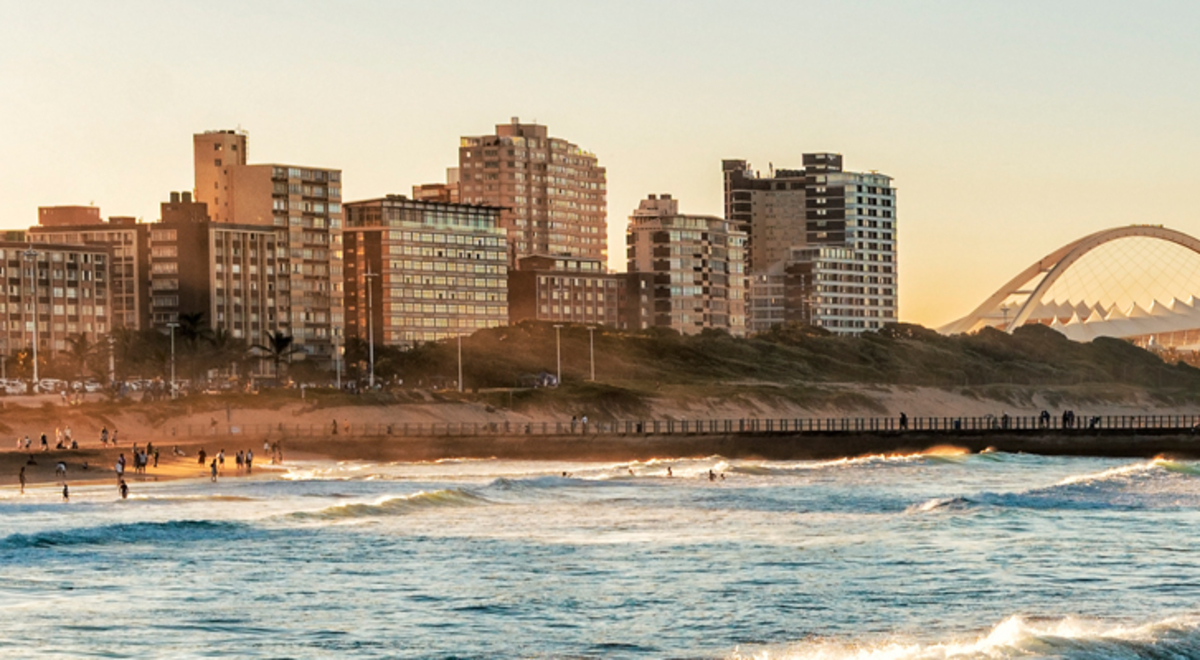
Explore KZN’s UNESCO World Heritage Sites
Among the very best reasons to visit South Africa’s KwaZulu-Natal province are its two UNESCO World Heritage Sites, namely the iSimangaliso Wetland Park and the uKhahlamba Drakensberg Park, which comprise a quarter of the country’s eight heritage sites.
Situated on the north coast of the province, iSimangaliso Wetland Park is one of the continent’s largest estuarine systems, boasting exceptional biodiversity and more than a huge variety of bird species within its 332 000ha.

iSimangaliso (which means “Miracle and Wonder” in isiZulu) incorporates eight interdependent ecosystems.
These are comprised of:
The four lakes of Kosi Bay, with its 700-year-old fish traps;
The coastal forests and Mabibi, Island Rock, Rocktail Bay and Black Rock;
Lake Sibaya, with its hippos and crocodiles;
Sodwana Bay - the site of the world’s most southerly coral reefs - is South Africa’s scuba diving and deep-sea fishing Mecca and one of the places where the once thought extinct coelacanth has been found;
The 38 500ha uMkuze birders’ paradise that is home to 420 bird species, leopard, black rhino, white rhino, elephant, giraffe, wild dog, cheetah and hyena;
False Bay, famous for its sand forest, thornveld and open savannah is a well-known boating and fishing destination. It also has interesting fossil sites. Elephant, buffalo, rhino, leopard, giraffe and tsessebe abound at Charters Creek.
Lake St Lucia is home to some 800 hippos, 1 200 crocodiles, flocks of pelicans and flamingos;

Cape Vidal, where beach-and-safari tours may be enjoyed.
Within the park, 35 frog species have been identified while there are more than 520 bird species that have been sighted as well as over 100 species of butterflies.
Its rich flora contains more than 2 000 types of flowering plants while all five of South Africa’s surviving mangrove tree species are to be found here.
iSimangaliso is also home to some cultural heritage sites and there is extensive evidence of Stone Age human activity.
There are many and varied accommodation options available, from rustic camping sites to beachfront log cabins, from basic tented diving camps to luxury lodge accommodation, and all tastes and pockets are catered for. Visitors are indeed spoilt for choice so the most difficult decision a visitor has to make is which one to choose!

A province with stark contrasts
In direct contrast to the iSimangaliso Wetland Park, just under a three-hour drive away, to the north-west, your journey takes you to South Africa’s highest mountain range (Drakensberg Mountains) and the uKhahlamba Drakensberg Park. This is a place of exceptional scenic beauty that not only gives its visitors breath-taking vistas and great holidaying options but more importantly offers sanctuary to threatened plant and bird species, as well as a wealth of historic rock art.
UNESCO describes the uKhahlamba Drakensberg Park as “having exceptional natural beauty in its soaring basaltic buttresses, incisive dramatic cutbacks, and golden sandstone ramparts”. The mountainous spine is 150km long, broken by definitive landmarks such as Cathedral Peak, Giant's Castle and the spectacular Amphitheatre, a wall of rock 5km long and 1 000m high at its highest.

From its summit at Mont-aux-Sources the thundering Tugela Falls barrel down to the valley below after the summer rains, while the peaks are regularly covered with snow during the winter months.
An exhilarating trip by 4X4 up the daunting Sani Pass to the highest pub in Africa; while hiking, rock climbing and fly-fishing are popular activities enjoyed in the area.
Game parks are home to herds of majestic eland, and endangered vulture species (lammergeyers or bearded vultures) can be seen circling above the escarpment. Typical flora in the area includes indigenous Protea, rare cycads and ancient tree ferns.
For 4 000 years the indigenous San people - the last of whom was seen here in 1871 - called the Drakensberg home and recorded their lives in paintings on cave walls. Around 30 000 paintings in some 600 caves and overhangs have been recorded in the uKhahlamba-Drakensberg Park.
When visiting this magnificent and extensive site, be sure to include a hike, river swim, rock art viewing and a couple of nights’ stay in accommodation in world-class resorts, hotels, self-catering units and campsites to absorb the tranquillity of the beautiful Drakensberg mountain range.


